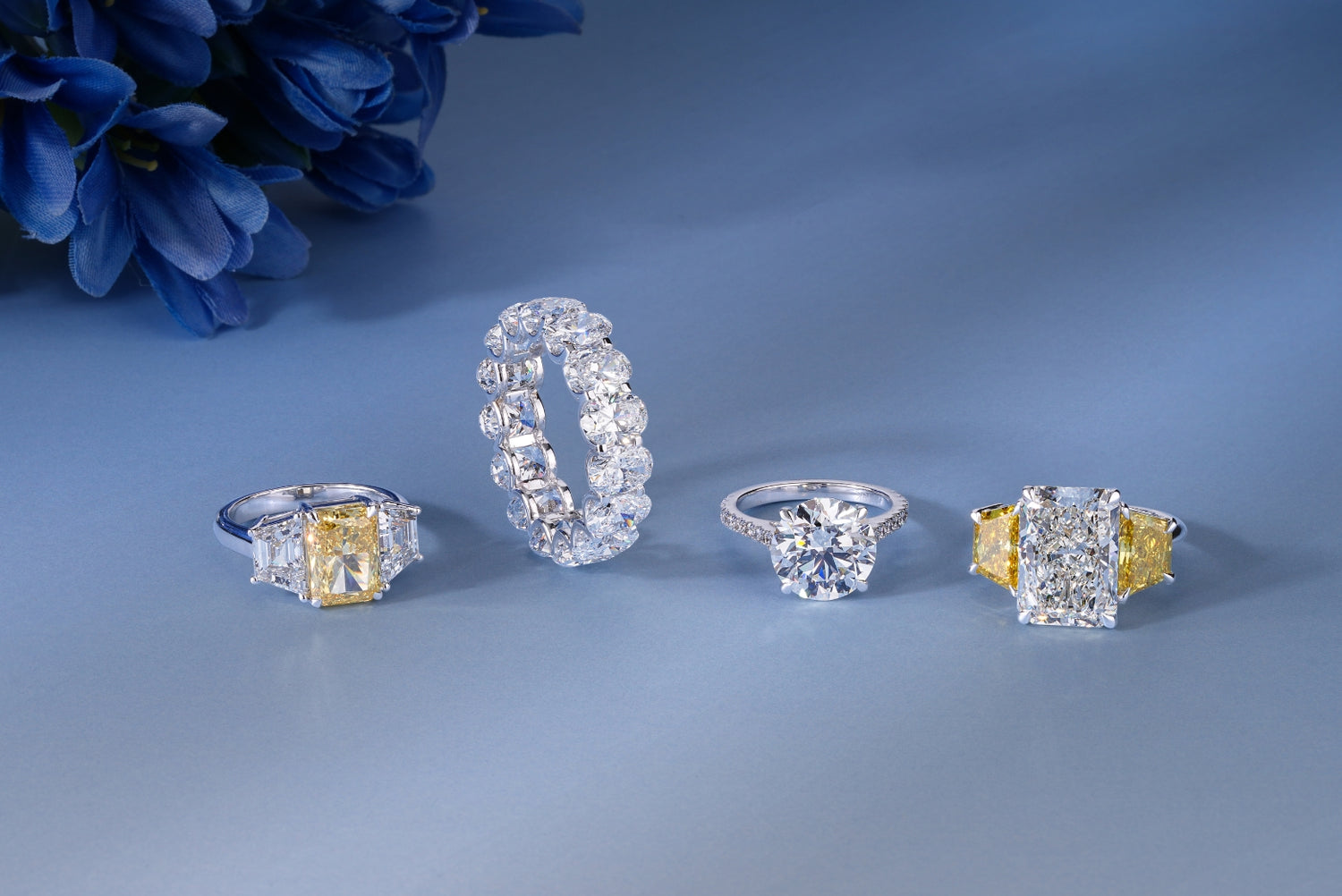Diamonds are a timeless symbol of luxury, love, and elegance. But in recent years, lab-grown diamonds have started to make waves in the jewellery industry. With their affordability and ethical production, more and more people are choosing these diamonds over their natural counterparts.
But here’s a common question that many people have: Can you tell the difference between a lab-grown diamond and a natural diamond? As a gemologist, I’m here to give you the inside scoop and clear up any confusion. Spoiler alert: the answer might surprise you!
Let’s dive into the world of diamonds and discover how lab-grown diamonds compare to natural diamonds—and whether you can really tell them apart.
What Are Lab-Grown and Natural Diamonds?
Before we get into the nitty-gritty of the differences, let’s quickly review what makes these diamonds unique.
Natural Diamonds:
-
Formed deep within the Earth over millions of years under extreme heat and pressure.
-
Mined from the Earth’s crust, which can have significant environmental and ethical concerns.
-
Vary in their quality, size, and color due to natural processes.
Lab-Grown Diamonds:
-
Created in a laboratory under controlled conditions using advanced technology that replicates the natural processes.
-
Made of the same material (carbon atoms arranged in a crystal structure) as natural diamonds.
-
Typically more affordable and ethically produced, with less environmental impact.
While both types of diamonds share the same fundamental properties, their origin is what sets them apart.
The Key Differences Between Lab-Grown and Natural Diamonds
1. The Creation Process
As mentioned earlier, the key difference between a lab-grown diamond and a natural diamond lies in how they are made.
-
Natural diamonds are formed over millions of years deep inside the Earth, where carbon atoms are exposed to intense pressure and heat.
-
Lab-grown diamonds, on the other hand, are created in just a few weeks using two main methods: High Pressure High Temperature (HPHT) or Chemical Vapor Deposition (CVD).
These processes replicate the natural conditions of diamond formation but on a much quicker timeline, which is why lab-grown diamonds are often considered “synthetic” by some, despite being 100% real diamonds.
2. Can You See the Difference with the Naked Eye?
Here’s the interesting part: No, you can’t. Lab-grown diamonds and natural diamonds look identical to the naked eye. They share the same chemical composition, crystal structure, and brilliance. Whether you’re wearing a lab-grown diamond ring or a natural diamond one, they will sparkle just the same!
In fact, even a professional jeweler or gemologist would have a hard time telling the two apart without special tools or equipment. Lab-grown diamonds are cut and polished to the same high standards as natural diamonds, so there’s no difference in their appearance unless you have the tools to examine them closely.
3. The Role of Technology in Lab-Grown Diamonds
While it’s true that you can’t tell the difference with the naked eye, technology has made it possible for gemologists to distinguish between lab-grown and natural diamonds. Instruments like diamond testers and microscopes can be used to detect subtle clues that indicate whether a diamond is lab-grown or natural.
For example, lab-grown diamonds may have unique growth patterns or inclusions that can be detected under magnification. Some lab-grown diamonds also show signs of metallic inclusions due to the growth process, which are not present in natural diamonds.
4. Price Difference
One of the most significant differences between lab-grown diamonds and natural diamonds is the price. Lab-grown diamonds are generally more affordable than natural diamonds, sometimes costing up to 30-40% less for the same quality and size. This price difference is primarily due to the fact that lab-grown diamonds do not require the costly mining process.
If you’re on the lookout for affordable jewelry in Australia that still offers the luxury and elegance of diamonds, lab-grown diamonds are a smart choice. You can get the same stunning beauty at a fraction of the cost of a natural diamond, leaving you with more budget to explore other unique jewellery options.
5. Environmental and Ethical Considerations
Another important factor to consider is the environmental and ethical impact of diamonds. Natural diamond mining can have a significant ecological footprint, with mining practices that can harm ecosystems and local communities.
On the other hand, lab-grown diamonds are created in a controlled environment with minimal environmental disruption. They are a more sustainable choice for those who are concerned about the ethical implications of diamond mining.
How to Choose Between Lab-Grown and Natural Diamonds?
Choosing between a lab-grown diamond and a natural diamond comes down to personal preference. Here are some factors to consider:
-
Budget: Lab-grown diamonds are often more affordable, so they are a great option for those who want a beautiful diamond without the high price tag.
-
Environmental Impact: If you’re looking for a more sustainable and ethical option, lab-grown diamonds are the way to go.
-
Authenticity: If having a diamond that was naturally formed over millions of years is important to you, then a natural diamond might be the better choice.
No matter which you choose, both lab-grown and natural diamonds are equally stunning and valuable.
Conclusion: Real Diamonds, No Matter the Origin
In conclusion, both lab-grown diamonds and natural diamonds are real diamonds that offer the same stunning beauty, brilliance, and durability. The main difference lies in how they are formed, with lab-grown diamonds being produced in a laboratory and natural diamonds forming over millions of years beneath the Earth’s surface.
At the end of the day, the choice between a lab-grown diamond engagement ring or a natural diamond is entirely up to you. Whichever you choose, you’ll be getting a dazzling, real diamond that will last a lifetime.
Want to explore our collection of lab-grown diamonds? Visit Pear Jewels today and find the perfect piece that matches your style, budget, and values.




